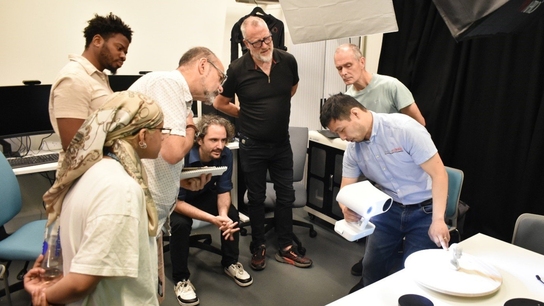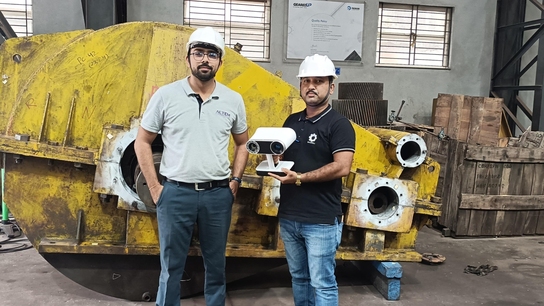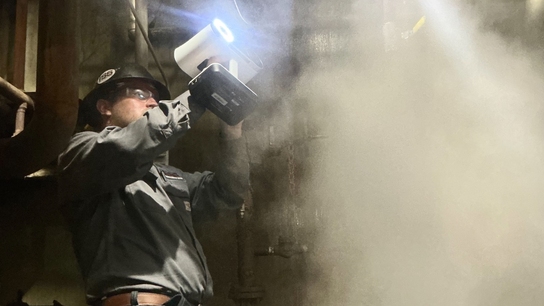How to boost the performance of an F3 race car with Artec Leo
Challenge: To improve the aerodynamic profile of an active F3 race car for a Master’s degree in engineering
Solution: Artec Leo, Artec Studio
Results: 3D scans of the vehicle enabled precise front wing development, increasing the car’s straight line and cornering speeds
A race car, such as the Dallara F399/01, is the product of decades of engineering advancements. Motors, frames, and materials have all progressed tremendously in order to comply with the technical regulations of motorsports while ramping up performance. In fact, the remarkable breakthroughs already made over the years in race car engineering make it appear as if there’s not much room left for further improvement. At least not without investing a fair amount of financial resources and time. Considering this, what options are possible if someone wants to gain a technical edge over the competition? John Hughes, a postgraduate engineering student at the University of Wales Trinity Saint David (UWTSD), offered up a simple answer: Aerodynamics.
“Every little detail, every little gain you get, is better than nothing. At the moment, we have managed to gain roughly 10 miles an hour in straight line speed, compared to where we started off with the car. Just through aerodynamic development.”
John has been working on the Dallara’s front wing as part of his master’s degree project with another aerodynamics student together with the two owners of the car. Their objective is to get better performance out of the vehicle, currently running in the British Sprint Championship, a prestigious 16 events per season championship held at venues across the United Kingdom. Between events, John and his team have small windows of time for working on the car at the University motor shop, located right next to Swansea’s harbor.
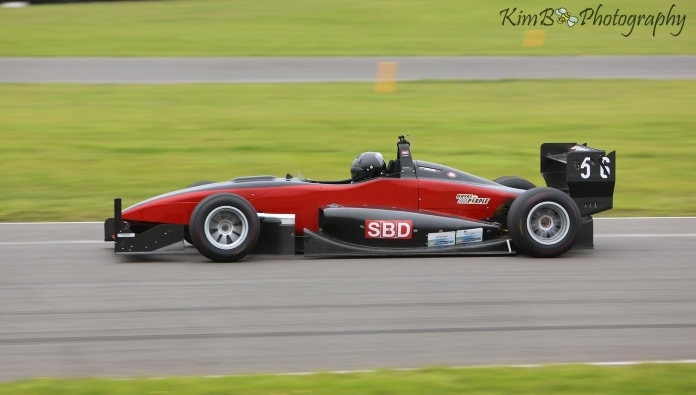
The Dallara F399/01, owned by SBD, performing on the circuit of Anglesey
For a while, the team used manual measuring tools to obtain the dimensions of the F3, but the results lacked precision in addition to being time-consuming. They naturally came to the conclusion that they needed a reliable way to get better measurements faster. This is where the idea of 3D scanning technologies entered into their field of view. At first, they tried basic methods of 3D scanning to get a CAD model they could work on, but it still wasn’t precise enough. As soon as they learned about professional 3D scanning solutions, they contacted UK-based Artec 3D Ambassadors Central Scanning, hoping they could provide the results needed. Seeing preliminary scans done with the brand new 3D scanner Artec Leo, John knew he had made the right call. “From looking at what has been captured, the amount of detail, compared to what I’ve seen previously, is second to none. It’s incredible, for what I’ve actually seen produced before,” he said.

John Hughes (right) and Central Scanning’s Tom White (left) looking at the preview 3D model of the Dallara, directly on Leo’s touchscreen
Nick Godfrey and Tom White from Central Scanning had preliminarily analyzed the task at hand, and concluded that the Artec Leo would be the best tool for the job. “Leo is capable of capturing medium to large objects very quickly. It doesn't require any preparation beforehand, and the scanning can be done directly on-site” said Nick. “The scanner is entirely autonomous, which means there are no cables or computers attached to it that limit your movements. We can capture virtually everything more easily than with any other 3D scanning solution.”
Leo comes equipped with its own battery, a touch screen that shows the scanning in real time, and saves the data on a memory card that can be subsequently transferred to a computer. Tom scanned the Dallara in the UWTSD motor shop, without the need for any superfluous gear. All in all, the scan of the whole car took less than 2 hours. The scan data was treated on Artec Studio in a day, and a complete CAD model was sent to John a few days later.
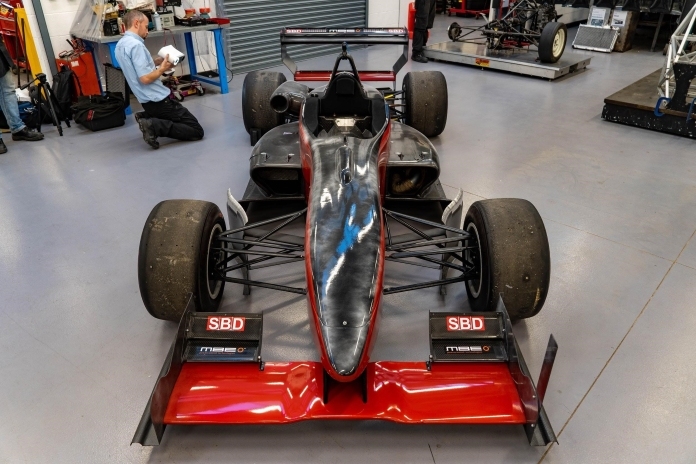
Leo’s portability gives the opportunity to scan on-site, quickly and easily
It is important to note that in the field of aerodynamics, millimetric changes in the design can go a long way. The Artec Leo boasts an impressive data capture rate of 3 million points per second, with real-time 3D processing displayed directly on its screen. By having the geometry of the entire car digitally scanned with utmost precision, John can run a better computational fluid dynamics (CFD) simulation on Ansys, analyzing all the options for fine-tuning the aerodynamic profile of the car from the most realistic 3D model.
“I usually start off by trying to optimize the current component as best as I can without altering the geometry of individual components. For example, the current front wing has multiple elements, such as flaps and winglets. I would study if moving the position of the flaps would enhance the overall performance of the wing,” explained John. “This process can take months to get right. However, it can be sped up with the use of Design of Experiment (DoE) software. Once the original geometry has been optimized, I can then go on and start to develop the original geometry by studying CFD results. Using this method saves on manufacturing time and cost, as I’m trying to maintain as much of the original front wing as possible.”
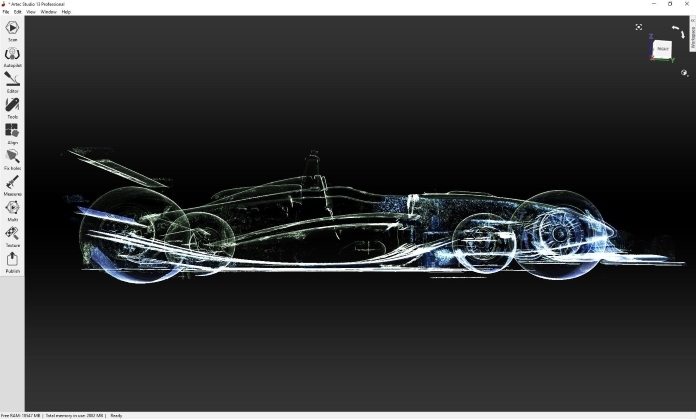
A 3D point cloud render of the Dallara F399/01 in the Artec Studio interface

Resulting 3D model shown in Artec Studio (left) and CAD models made from the captured data (right)
After the analysis and the design work, the modified parts were sent to Fibre-Lyte, a carbon fiber manufacturer specialized in high-performance sports. With the help of a 3D milling machine, they are able to create cost effective one-off parts that can be repeated, or scaled up, if higher volumes are required.
The manufactured parts have been installed on the race car, and John already began noticing the difference: “We have seen gains in straight line and cornering speeds since modifications began. I created a number of bargeboard design iterations, with each one showing performance improvements. The simulation results show good promise in enhanced performance.”

A bargeboard designed by John mounted on the F3
Why use Artec 3D scanners in Universities?
As John’s case shows, the added value of professional 3D scanning in engineering, or other disciplines such as archaeology, design, and sports science is immensely beneficial to the students. Learning with the newest technologies is a guarantee that students will be far better prepared for their future careers, leading their fields in metrology, reverse-engineering, heritage preservation, and elsewhere.
The Artec 3D product line ensures the most precise 3D scanning, with scanners for tasks of any size. Artec 3D is proud to work with universities across the globe, thanks to its ever popular Educational Packages. The special deals offered for schools, universities, and research institutes are excellent opportunities for the next generations of experts to gain hands-on experience with the most advanced tools available on the professional market.
Following the success of their first experience with 3D scanning, the University of Wales Trinity Saint David has shown interest in continuing with Artec 3D products on various engineering projects, including scans of motorbikes and sidecars.
Scanners behind the story
Try out the world's leading handheld 3D scanners.


